The Very Large Array (VLA) is a radio telescope installation which is located on the Plains of Agustin west of Socorro in west-central New Mexico. The telescope is a part of the National Radio Astronomy Observatory (NRAO) which is funded by the United States' National Science Foundation. The VLA is the world's most advanced radio telescope.
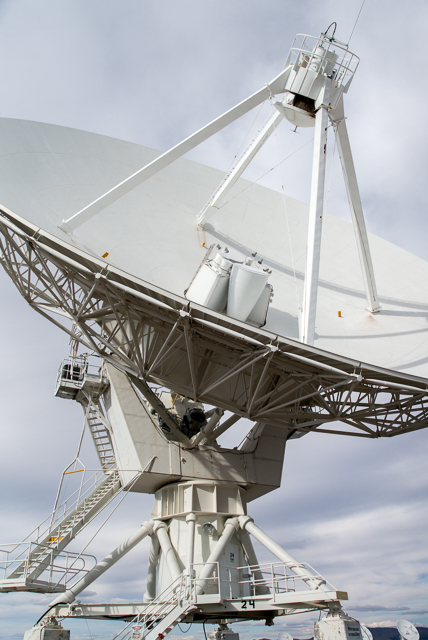
A radio telescope studies astronomy at radio wavelengths instead of at visible light wavelengths as do optical telescopes. The radio signals emitted by many astronomical objects are received by an antenna like this one which produces electrical signals just as an ordinary radio does. The signals are then analyzed to produce a photo-like picture of the strength of the radio emissions from different regions of the object being observed, and the strengths tell astronomers about the physical processes occurring in the object. The VLA operates at several different wavelengths between 1.0 GHz and 50 GHz. Humans, too, produce a lot of radio signals, including many within this wavelength band. Even Wi-fi and mobile phones operate at frequencies within this band. Thus the VLA is situated in a very remote area, far from such non-astronomical radio sources, and it's location is surrounded by mountains which greatly reduce the possible radio interference.
The VLA radio telescope consists of an array of 27 individual antennas, each having a diameter of 25 meters and weighing 230 tons. The antennas operate together as an interferometer. This means that the signal data from all 27 antennas are combined and analyzed together to make a much more detailed picture than any one antenna could make alone. The signal strength of the entire array is 27 times that of any one of its antennas. The resolution of the array is determined by the distance between the antennas: the greater the distance, the greater the detail that the telescope can "see" of any radio-emitting object. These photos show the antennas in their configuration of closest distance.
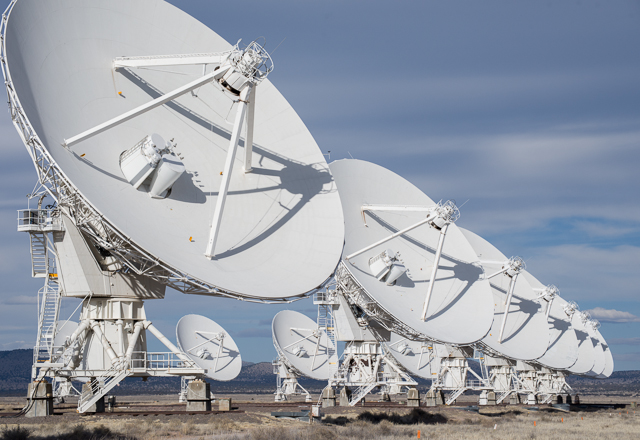
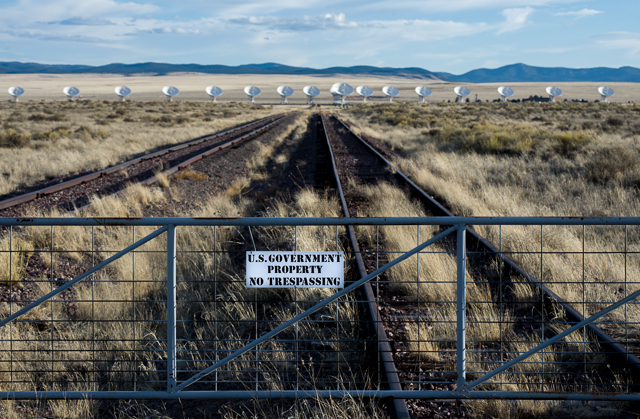
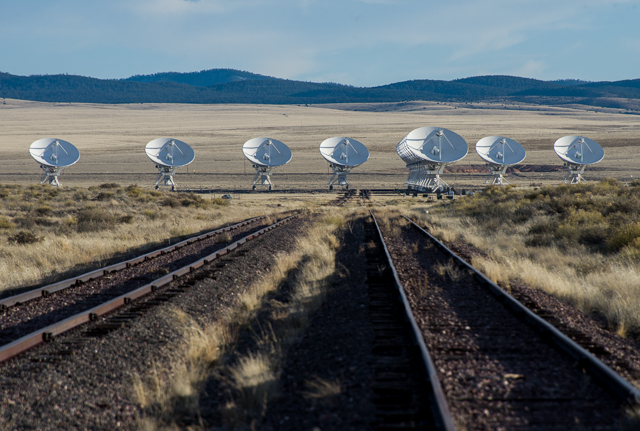
Because the telescope's resolution depends on the distance between antennas, and because different resolutions are useful for studying different objects, the antennas can be moved into configurations having different distances. A move is accomplished by a specially designed transporter. The transporter rides on ordinary railroad tracks which stretch across the Plains of Agustin in a Y-coniguration. One branch of the Y goes north of the center of the Y for 11 miles, and the other two branches go south-west and south-east for 13 miles each. To move an antenna, the transporter slides under it, picks it up and then moves it slowly along the track to another location. Once there, the transporter sets the antenna on three specially made pylons which hold the antenna in place.
There are four different configurations for the 27 antennas having maximum distances of 0.64, 2.11, 7.08 and 22.62 miles. Thus there are four sets of 27 pylons located at different distances along the railroad tracks. The pylons provide fixed and well-known positions for the antennas which is necessary for proper operation. The transporters, the red vehicles in this photo, are used to change the configuration at roughly four month intervals, allowing the telescope to operate at each resolution for enough time to facilitate many distinct observations of astronomical objects. There is also a 28th antenna, so that one antenna can be undergoing routine maintenance or repairs without shutting down the telescope. The extra antenna is always in the service building, shown here, where it has been moved by a transporter. Note the diminuative full-sized pickup truck in the lower left corner of the photo.
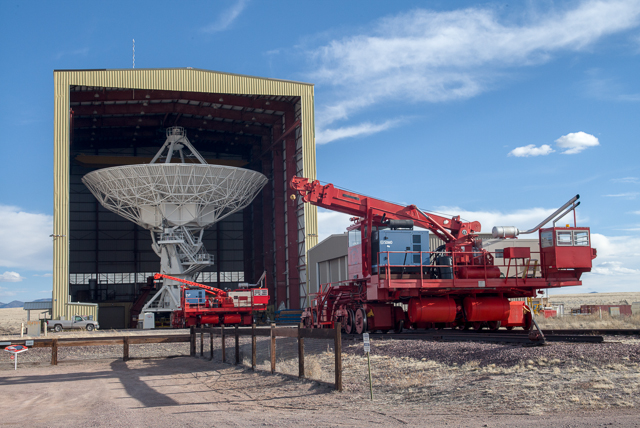
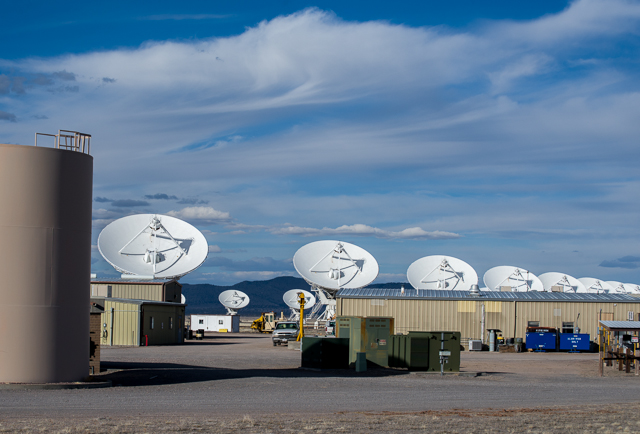
The VLA installation is a complex operation that requires many other services besides servicing the antennas. The railroad tracks require frequent maintenance, because the clay on which they are laid slowly deforms and the tracks require straghtening. The signals from the antennas were formerly sent over microwave waveguides but now travel over optical fibers, and the conversion from electrical radio signals to digital data is performed at each antenna. These and many more routine problems employ a sizable number of skilled workers to keep the facility collecting astronomical data.
Because the array operates at radio wavelengths, it is not limited to night-time observations the way optical telescopes are limited: the VLA can operate around the clock, and there is a very large amount of observing time available. Any astronomer in the world may use the VLA for observations. To do so, an astronomer submits a proposal for an observation to the NRAO, describing the object to be observed, why the observation is important, the resolution required and how long it will take (along with other details). The approved proposals are then scheduled for telescope time. At present, the VLA approves just one of every four proposals that it receives.
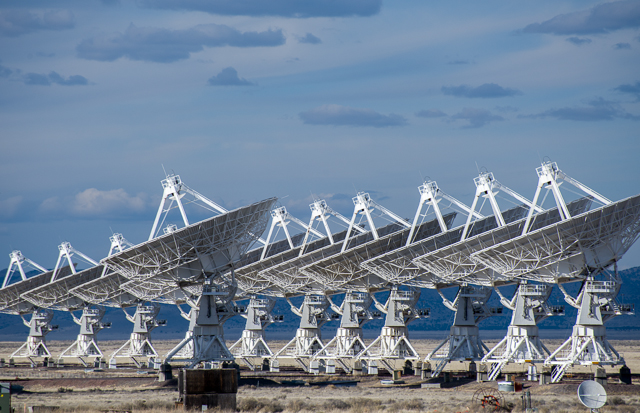
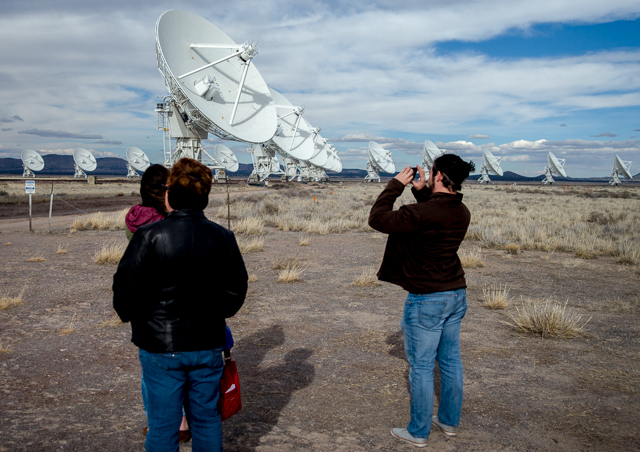
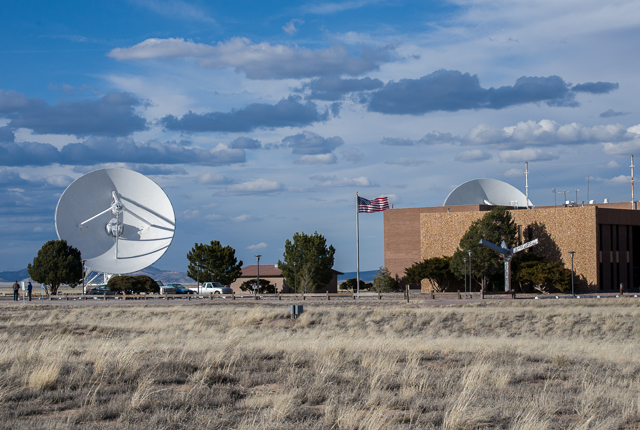
There is a building on-site where the array operator oversees the operation of the array as it makes observations. In addition to directing the antennas to a particular object of study, the operator rides herd on the data acquisition, monitoring it as it is accumulated and stored on disk for later analysis. Importantly, too, the operator keeps an eye on the wind, since wind over 35 miles-per-hour will adversely affect the observations. In the case of strong winds, which occur frequently, the antennas are all pointed straight up, and are parked in their most stable orientation.
Data analyses for every observation call for a large amount of computation to implement the interferometer formed from the 27 antennas and to produce an image of the observed object. The super computers for this task are run from the New Mexico Institute of Mining and Technology in Socorro. After analysis, the results are sent to the astronomer who then interprets them.
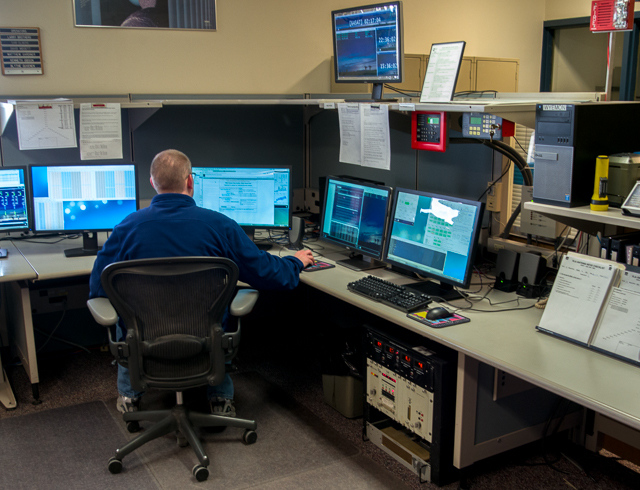
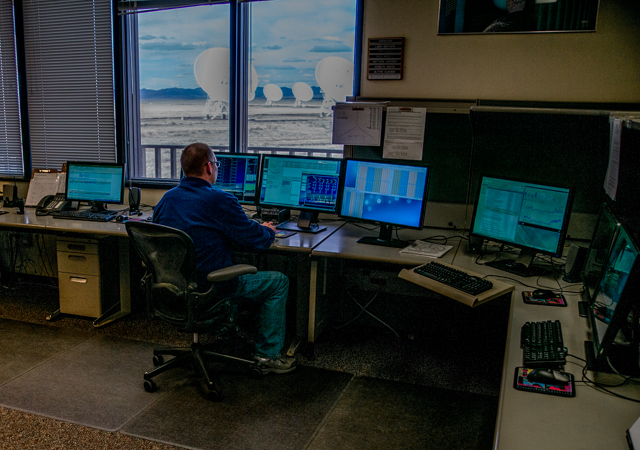

The image below is one example that illustrates how the VLA can yield insights into the nature of astronomical objects. The description to the right of the image is quoted from the NRAO website at http://nrao.edu which shows many other interesting examples in its gallery section.
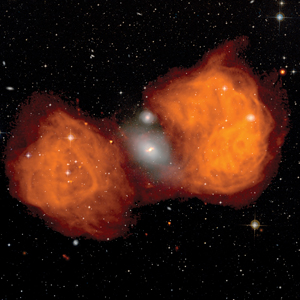
Credit: NRAO/AUI/NSF
"Fornax A is a galaxy with a very active black hole in its core that is spraying radio waves out into enormous jets. Here, the white glow in the center is the visible galaxy NGC 1316 that you can see through the constellation of Fornax. Notice the wee spiral galaxy above it? These two galaxies are merging, and as gas and dust are stripped out of the small galaxy and poured into the center of NGC 1316, the black hole nestled there spins it up. How do we know this? The huge radio lobes to either side of this merger are the telltale signs that a black hole is being fed more than it can handle. These are the billowing ends of powerful jets shooting out spun-up, escaped material far into space."
Be aware that this image is a composite. The background image showing stars of the Milky Way and many distant galaxies was made with the Hubble Telescope. The giantic orange clouds (rendered in false color) to either side are much larger than the galaxies, and they constitute the radio image observed with the VLA which has been superimposed onto the visible one. The orange clouds are some 600,000 light-years in size. Without the radio observation, one would not guess that such a violently active event was taking place and extending over such a great distance as these two galaxies merge. Without it our understanding of how black holes behave would be impoverished.
Fornax is a constellation in the southern sky which is far south of the constellation Aries and near the south galactic pole. The large lenticular galaxy is designated NGC1316, and the smaller galaxy is NGC1317. They are about 60 million light-years away. Fornax A designates the radio source produced by the merging galaxies. It is the fourth-brightest radio source that has been detected. NGC1316 is 215,000 light-years in diameter and is the brightest member of the the Fornax Cluster of galaxies. Other members of that cluster are also visible in the optical image. One needs at least a 1" = 25mm binocular or telescope (larger is much better) to see NGC1316 which has apparent magnitude 9.0. The Fornax Cluster includes 56 galaxies and is quite near our own Milky Way galaxy and the Local Group to which ours belongs. Its nearness makes the Fornax Cluster an important object of study.